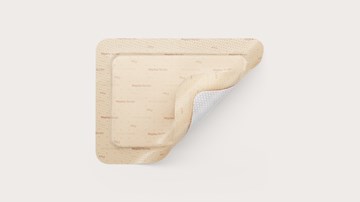Sustainable solutions
We are continuously innovating to offer customers the most sustainable solutions, without compromising on the safety and quality of our products. By applying life cycle thinking to existing products, we are proactively steering our product portfolios towards improved sustainability outcomes. Our responsibility stretches to the whole life cycle, from sourcing, transportation, manufacturing, through to customer use and end of life. Here are some examples of initatives we focus on in our journey towards a sustainable product portfolio.
Sustainability through optimal patient outcomes
Mölnlycke’s ‘Sustainable solutions’ are products that offer significant1 sustainability benefits over mainstream2 alternatives in the market, while providing the same or better functionality.
The sustainability benefits of Mölnlycke’s ‘Sustainable solutions’ can include one or more of the following:
- Lower GHG emissions and improved energy efficiency
- More efficient use of natural resources
- Lower waste
- Less packaging
- Improved inclusivity
- Improved health and wellbeing
We also assess if a given ‘Sustainable solution’ does not have adverse effects on any other criteria2.
1. A sustainability benefit underlying a ‘Sustainable solution’ is considered significant when a particular benefit demonstrates at least a 10% lower impact on the specific criteria. For example, Mölnlycke will consider a solution to be ‘Sustainable’ if it allows customers to achieve an improvement in one of the defined criteria by at least 10% while obtaining the same functionality as the alternative.
2. The portfolio framework description can be found on: https://www.wbcsd.org/Projects/Chemicals/Resources/Framework-for-portfolio-sustainability-assessments

Our responsibility stretches to the whole life cycle, from sourcing, transportation, manufacturing through to customer use and end of life. We assess the sustainability performance of all products and build sustainability thinking into our innovation process through sustainable design insights and eco-design tools.
The assessment work is based on ISO standards 14040/44, the internationally established and recognised frameworks that specify requirements and provide guidelines for Life Cycle Assessment. In 2022 we carried out full Life Cycle Assessments for products including Biogel® surgical natural latex gloves, Biogel PI gloves and Mayo Stand Cover, accounting for 9.5% of the portfolio in terms of net sales.
Also in 2022, we piloted a holistic approach, carrying out a full analysis of all sustainability and product safety risks and opportunities for selected product portfolios in our Operating Room Solutions Business Area. Information from the pilot is being used to support product portfolio planning through our marketing and innovation teams.
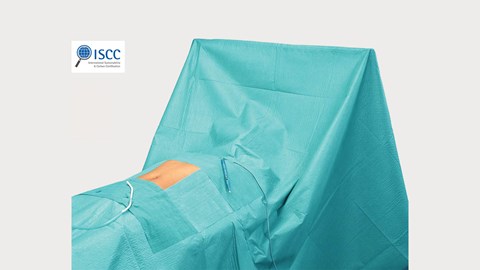
Innovating with renewable raw materials and components
In recent years we have introduced product innovations which are focused on ISCC certified biobased materials and other renewable materials or components. Examples include Mölnlycke’s range of drapes, ProcedurePak® solutions and natural latex gloves.
Thus, we have introduced a number of ISCC (International Sustainability and Carbon Certification) accredited sets of universal drapes that use renewable, bio-based raw materials. One of the three layers that make up the drapes is made of ISCC-certified mass-balanced plastic based on pine oil, a by-product from the forestry industry. As a result, an externally reviewed Life Cycle Assessment1 showed these drapes to generate on average 20% less greenhouse gas emissions than traditional products.
While ProcedurePak® clearly contributes to reduce the risk of contamination2, with fewer pieces to unpack, it also contributes to improve efficiency in hospitals by reducing the theatre set up time by up to 40%3 and so freeing up staff to support elsewhere. It can also reduce waste, helping hospitals to reach their sustainability targets4 and bring efficiency to purchasing teams, with up to 54% less time spent on invoicing3.
We have further improved the sustainability profile of our trays by introducing a series of components, such as PVC- free diathermia pencil, PVC-free hand activated L hook and the MIS organiser made of FSC certified virgin pulp to the market.
Read about our ISCC certified BARRIER® Universal drape
Read about our ProcedurePak solutions
Read about Mölnlycke Monopolar L-hook electrode
1. Life Cycle Analysis. 2020 12 30, Ramboll, Comparative LCA on fossil- and bio-based raw materials for production.
2. Aseptic technique and packaging: A study of potential contamination pathways during the use of sterile packaging in an operating room context, 2016
3. Greiling. A multinational case study to evaluate and quantify time-saving by using custom procedure trays for operation room efficiency, 2010
4. Assessing the carbon and waste benefits of moving to Procedure Packs at Royal Liverpool and Broadgreen University Hospitals, NHS Trust, 2011
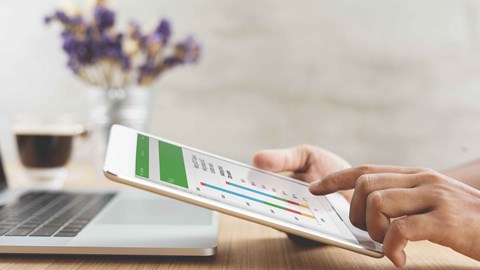
Guiding customers to make sustainable decisions
To guide customers in their conversion to more sustainable solutions, we have now developed a CO2 calculator digital tool which straightforwardly calculates the environmental benefits of choosing an ISCC drape over a traditional product1. The calculator allows the customers to easily view the impact of replacing their existing products with sustainable ISCC-certified drapes, based on their annual consumption of drapes. The result is reported both as a percentage reduction of CO2eq. emissions and as the actual reduction in kg CO2eq.
Read more on Mölnlycke Value Calculator
1. Life Cycle Analysis. 2020 12 30, Ramboll, Comparative LCA on fossil- and bio-based raw materials for production
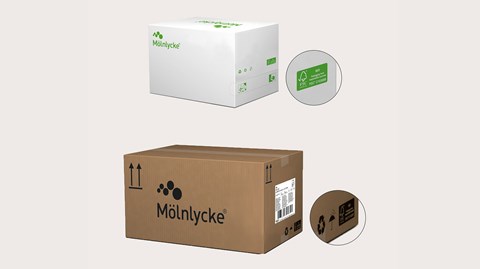
Packaging
Packaging has an important role to play by extending the lifespan of Mölnlycke’s solutions and protecting them from external factors such as damage during transport and handling, or deterioration caused by contamination. This reduces the need for additional raw materials and resources in products and helps to minimise waste for customers.
However, packaging also presents some challenges. It uses valuable resources in manufacturing and generates waste when not recycled – an increasing focus of governments and regulators around the world.
As part of our resource efficiency journey, we have set a target that more than 95% of packaging will be recyclable and more than 80% of all packaging made of post-consumer recycled (PCR) and/or renewable material by 2030. These targets are based on total packaging weights and 2022 product scope1. Currently, 91% of the packaging material was recyclable and 72% contained recycled material.
The majority of the our primary packaging is made of mixed plastic or composite materials. This presents recyclability challenges considering currently available end-of-life infrastructures. We are developing solutions to these issues. In the Antiseptics product assortment, all bottles and ampules are made of 100% recyclable mono-material plastic. We will continue to work with suppliers, recyclers and other partners to increase recyclability for plastic primary packaging in other business areas, as well as optimising their weight and recycled content.
1 Scope covering products mainly produced by Mölnlycke, most contract manufactured and distributed products excluded from the initial scope. Scope to be increased during 2023.
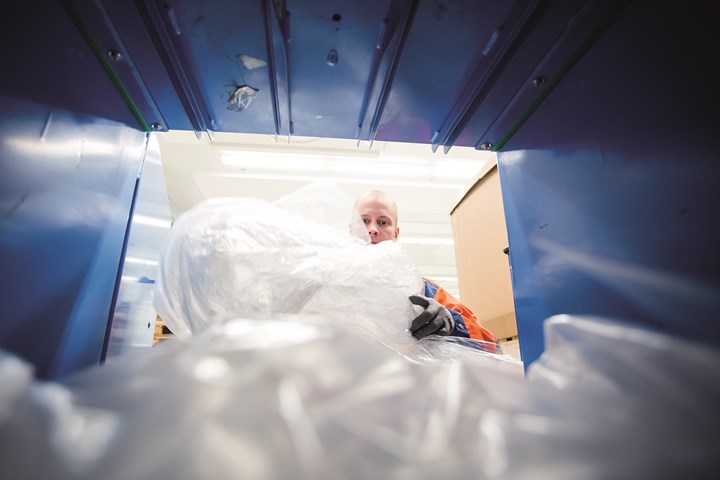
We aim to reduce waste from production and increase efficiency in the use of raw materials. Our ambition to decouple growth from increasing material use goes beyond recycling. It starts with limiting the need to recycle. Therefore, we focus on zero waste, working to the ‘right first time’ principle and repurposing and reclaiming materials. We are on a journey to become a zero-waste company in both material waste and water. This includes ambitious targets of zero waste to landfill and reusing water at the most water intensive sites by 2030, as well as implementing closed water loop systems in all production environments.
